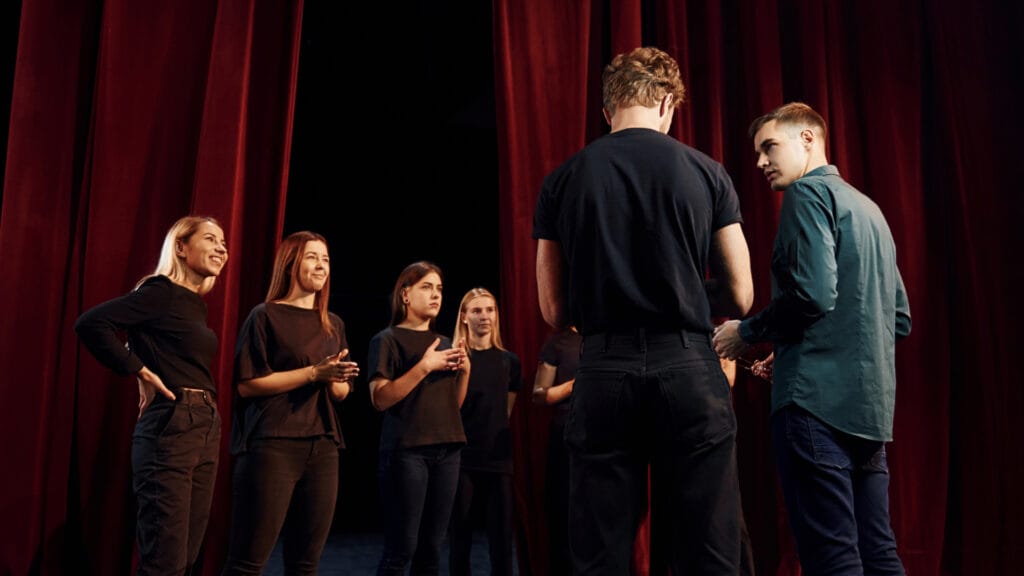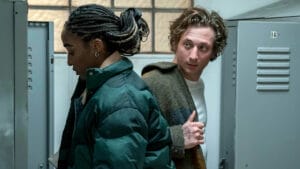The Industry in the UK and Ireland: How to Navigate the Landscape
Along with insights from some industry professionals, you’ll get the lowdown on how to present and make the most of your marketing materials in the UK.

We now live in a world where virtual auditions have become the norm.
What this means for actors is a world of opportunities to play with. Still, as the boundaries blur, it’s important to understand the differences between the different acting markets, and that’s what this article aims to do.
Along with insights from some industry professionals, you’ll get the lowdown on how to present and make the most of your marketing materials in the UK.
The actor’s union in the UK is Equity, and film union contracts are known as PACT agreements, which set out the minimum terms and conditions for artists working with production companies.
The standard agency commission in the UK and Ireland is 20% for commercials and 15% for TV and film.
In the UK, you don’t split your commission between an agent and a manager. You only pay the agency that got you the work.
Profile Creation
So, how do you ensure that your CVs and website profiles are top-notch, have good visibility, and get the right attention? Shauna Griffith, a casting director, advises actors that.
“When creating profiles and CVs, detail is key. Of course, provide information on your training and credits, but also on additional skills. Up-to-date headshots, showreel clips, and voice-over demos are very helpful for casting.”
As an actor, you need to build self-awareness to fully understand your strengths and weaknesses and identify areas of training and growth. This will enable you to tailor a profile that authentically reflects the full array of your talents.
Casting directors Alison Murchie and Nancy Bishop highlight that the number of emails casting directors receive is numerous, and it’s not always easy to remember everyone, which is where a good CV and profile helps;
“Include a link to a brief showreel or recent self-tape so we can see how you look and sound. This should also be on your profile page. Sound clips are also good as they showcase your accents or languages. Research what casting directors are working on, and if you have relevant skills for that project or live close to where the shoot is, it’s more likely to pique their interest. Invites to plays or showcases are always welcome, and we try to attend as many as possible depending on locality.”
Headshots
When it comes to actor headshots, you’ll find subtle differences between the different markets you work in. American headshots tend to be more dynamic, glossier, and magazine-esque, whereas they are more subtle, natural, and atmospheric in the UK. YellowBelly photography believes that;
“Headshots should be an authentic representation of an individual. They should be honest, truthful, and dynamic, with a timeless and cinematic feel; a captivating portrait that looks and feels like you.”
Your headshots are the first thing a casting director sees and are the front page of your branding. Ivan Weiss photography advises when choosing a photographer
“Look at the work of the photographer and choose somebody who you feel fits what you want to do, who you want to be as an actor, or who you want to develop into as an actor, depending on where you are in your career.”
So, think about the type of roles you want to play, create a mood board of different looks and characters, and share this with your photographer to help convey what looks you’re aiming to achieve.
Showreels
Next up are actor showreels. In America, separate clips and sizzle reels, which are 1-2 minutes and comprised of around 5-6 different scenes, are popular. In the UK, they tend to be 2–3 minute showreels.
When you’re just starting out, finding appropriate material can be challenging. One way to find suitable material is to work on student films, collaborate with friends, or film monologues. Casting Director Shakyra Dowling has this advice:
“Tailor your reel to your casting type: no point having scenes in there that aren’t right for you. Focus on 3 or 4 scenes, no montages as they don’t demonstrate your acting ability, and keep it under 3 minutes maximum (2.5 mins is optimum). Remember that when we are viewing showreels, we are not watching them as a short film but watching them to see if you fit a specific role that we are casting at the time.”
Audition & Self-Tapes
Self-tapes now dominate the casting industry, giving casting directors access to a wider pool of actors than ever before, so it’s important to ensure that tapes are top-notch.
Quality doesn’t mean high price tags and expensive studios; you can use your phone’s cameras, a plain wall, and a lighting ring to help create the desired effect without breaking the bank. You can also use free apps like Clipchamp that allow you to edit and compress your tapes for free, without losing any quality.
Alison Murchie and Nancy Bishop have this advice when filming self-tapes;
“It might seem obvious but watch it back. Does it look and sound the way you want? Is there too much background noise? Is the person reading with you louder than you are? Secondly, know the self-tape rules but know when to break them. Would it look better if you directed it straight to the camera? Would the background enhance rather than distract from the scene? Finally, for both self-tapes and auditions be brave in your choices.”
To give yourself that flexibility to experiment and make bold choices, you’’ll need to gather as much information as possible from the breakdown, character description, and any other information sent by the casting director or your agent. Sometimes, you’’ll have only a few lines to convey a powerful performance; doing the latter will help you flesh out the character.
Shauna Griffith recommends,
“Understanding the character you are bringing to life shows on camera, through your body language, your eyes and your delivery. I think spending a large portion of your prep time on character development will help your audition stand out because, as a viewer, I will believe I am seeing a character experience the moment rather than an actor saying the lines.”
Networking
Lastly, let’s look at networking. It’s a fundamental skill for survival in any industry and one that’s often neglected.
Networking can introduce you to people outside of your core circle of contacts and provide you with insights on roles before they even get to the casting stage. Part of networking is personal branding and authenticity and the ability to find and make connections within a short space of time.
Actor, Rachel Grant, has this to say about the importance of networking;
“A great networking opportunity is attending an event like a film festival, which brings together a diverse array of industry professionals, including producers, casting directors, and other actors, all in one place. These events provide opportunities to meet many individuals through mixers, Q&A panels, and fun social gatherings. Choosing a festival that aligns with your interests, such as a niche horror film festival or a major event like the Edinburgh Fringe Festival, can be particularly beneficial.”
There are many networking opportunities in the UK, from attending events with Mixing Networks, Casting Director Workshops, Shooting People Industry Events, and Kino London. Film Director Chris Jones has this advice for successful networking;
“Be your own agent. Create relationships, and work with as many emerging filmmakers as possible. Get serious about your online presence and be audacious, add to that your work ethic, experience and unstoppable energy. Be the rockstar and never the diva and help friends as much as you can”


